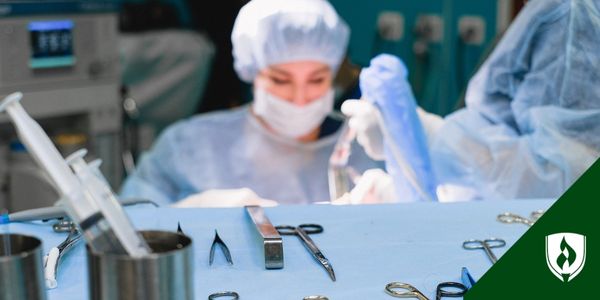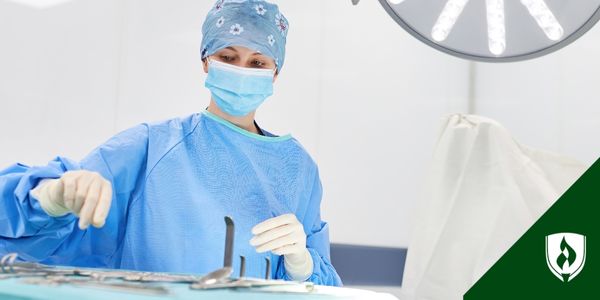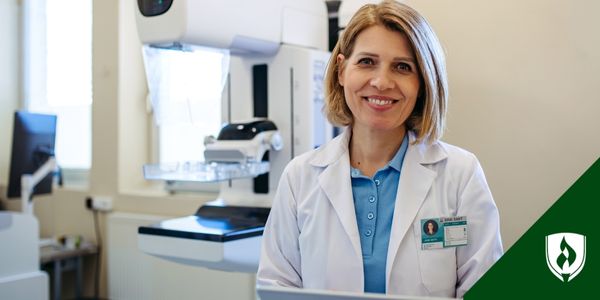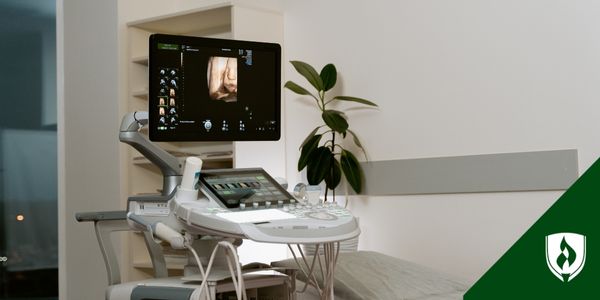What Is a Medical Laboratory Technician?
06/10/2025
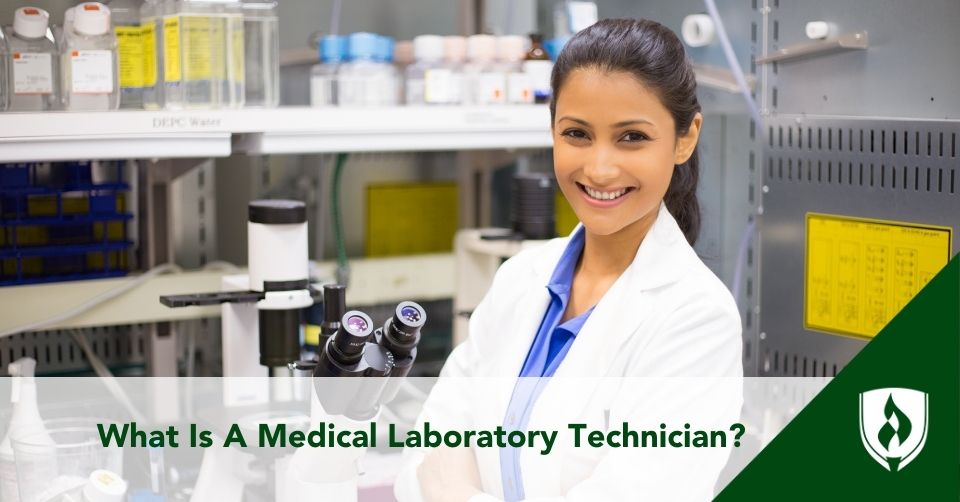
The healthcare industry relies on many different people working behind the scenes to support patient care. One of the most important roles is the medical laboratory technician (MLT). This field combines clinical laboratory science, biological science, and hands-on work with lab equipment to perform diagnostic tests.
Medical Laboratory Technology
Medical laboratory technicians help in the diagnosis and treatment of patients1 by analyzing body fluids and tissue samples, typically in a lab. They use specialized equipment to diagnose, treat and prevent disease. They may work in many different areas or specialize in one area.
MLTs are part of medical and clinical teams, often working with clinical laboratory technologists, clinical laboratory scientists, laboratory managers and clinical pathologists. They work in medical facilities such as hospitals, diagnostic laboratories and outpatient clinics, running routine medical laboratory tests that inform medical decisions.
Where Did Medical Laboratory Originate?
The history of medical laboratory technology began around the late 19th century2, when clinical pathology and biological science led to the first laboratory-based diagnostic practices. Formal medical laboratory training programs started in the early 20th century, laying the foundation for today’s clinical laboratory science.
Education and Training
To work in medical laboratory technology3, some choose to pursue an associate degree through a medical laboratory technician program or a bachelor's degree in medical laboratory technology.
Additional training options may be available through the military, vocational schools, or technical centers. Certain specialties, such as cytotechnology, may require more advanced, specialized education programs.
Programs include coursework in phlebotomy, hematology or clinical microbiology, with hands on practice using automated equipment and lab equipment. Medical laboratory training prepares you to work with biological samples, understand lab procedures and follow quality control standards.
Roles and Responsibilities in the Lab
In the lab, medical laboratory technicians run tests that help diagnose diseases, monitor treatment for their patients.
- Analyzing body fluids and tissue samples
- Using specialized equipment and automated equipment
- Running complex tests to detect abnormalities
- Maintaining quality control throughout the testing process
Laboratory technicians support clinical pathologists by ensuring all specimens are processed correctly and efficiently.
Types of Laboratory Tests Performed by Medical Laboratory Technicians
A medical laboratory technician is responsible for performing a variety of laboratory tests that assist in patient diagnosis and disease management. These tests are critical in detecting illnesses ranging from infections to chronic diseases.
Some of the most common test categories1 include:
- Hematology Tests: Examining blood samples to detect conditions like anemia, leukemia, and clotting disorders.
- Clinical Chemistry: Measuring glucose, electrolytes, cholesterol, and enzymes to assess organ function.
- Microbiology: Identifying bacteria, fungi, and viruses in body fluids and tissue samples to diagnose infections.
- Molecular Diagnostics: Using genetic markers to detect hereditary diseases and viral infections.
- Immunology and Serology: Assessing immune system function, particularly for autoimmune diseases.
These medical laboratory procedures are crucial to clinical laboratory science, allowing medical technologists and clinical laboratory scientists to provide physicians with vital diagnostic information.
Work Environments and Healthcare Settings
Medical lab technicians work in a variety of healthcare settings4, including hospitals, diagnostic laboratories, research institutions and public health organizations.
Workplaces are often highly sanitized and organized, with a focus on safety and accuracy. Technicians wear protective clothing and work with specialized equipment to handle biological samples.
Schedules may vary, with opportunities to work day, evening or weekend shifts depending on the facility’s needs.
Certification and Professional Standards
After completing their degree programs, graduates often seek to get certified from organizations like the American Society for Clinical Pathology® (ASCP®)5. Certification may prove a technician’s expertise in medical technology and lab procedures.
Some states require occupational licensing to practice as a clinical laboratory technician. Certification and license options may be useful for laboratory professionals whose positions require high industry standards.
Career Advancement and Specializations
With experience and further education, a medical laboratory technician may be eligible to pursue technologist roles after gaining additional experience and education.
These specializations may involve complex tests and use of highly specialized equipment. Technicians who pursue a bachelor’s degree in medical laboratory science or a related field may move into roles as medical laboratory scientists, clinical laboratory scientists or supervisory positions.
Emerging Trends in Clinical Laboratory Science
The field of medical laboratory technology is changing with advancements in automated equipment, artificial intelligence (AI)-assisted diagnostics, and molecular diagnostics reshaping the way clinical laboratory scientists work. Medical laboratory technicians now use equipment that may assist in increasing efficiency and supporting accurate diagnostics, depending on the lab setting and protocols.
Some key advancements include:
- AI and Machine Learning6: AI-powered software can assist in analyzing biological specimens, improving detection of abnormalities in tissue samples and body fluids.
- Automation in Laboratory Testing7: Automated analyzers now perform high-volume laboratory tests, reducing errors and increasing efficiency.
- Molecular and Genetic Testing8: Advances in clinical chemistry allow for earlier disease detection at the genetic level, aiding in patient diagnosis.
As technology continues to advance, medical laboratory training now includes education on operating complex tests and maintaining quality control in these high-tech healthcare settings.
Looking Ahead in the Medical Lab Field
The world of medical laboratory technology is full of opportunities for those who are curious about science and passionate about helping others.
Whether you're interested in analyzing samples, using the latest lab equipment, or contributing to important patient diagnoses, becoming part of the laboratory science field offers a rewarding and essential role in healthcare.
As medical advancements continue to grow, so does the demand for skilled medical lab techs and laboratory scientists which continues to evolve with new technologies and practices.
Now that you know what a medical laboratory technicians is, let's dive into what their day-to-day work looks like. Read more in "What Does a Medical Laboratory Technician Do?"
1Bureau of Labor Statistics, U.S. Department of Labor, Occupational Outlook Handbook, Clinical Laboratory Technologists and Technicians, at https://www.bls.gov/ooh/healthcare/clinical-laboratory-technologists-and-technicians.htm#tab-2 (visited Apr. 28, 2025).
2American Society for Clinical Laboratory Science - Pennsylvania Chapter, Medical Diagnostic and Laboratory Tests Overview, at https://ascls-pa.org/uploads/2/4/2/1/24211033/meddiagandlab.pdf (visited Apr. 28, 2025).
3Bureau of Labor Statistics, U.S. Department of Labor, Occupational Outlook Handbook, Clinical Laboratory Technologists and Technicians, at https://www.bls.gov/ooh/healthcare/clinical-laboratory-technologists-and-technicians.htm#tab-4 (visited Apr. 28, 2025).
4Bureau of Labor Statistics, U.S. Department of Labor, Occupational Outlook Handbook, Clinical Laboratory Technologists and Technicians, at https://www.bls.gov/ooh/healthcare/clinical-laboratory-technologists-and-technicians.htm#tab-3 (visited Apr. 28, 2025).
5American Society for Clinical Pathology®, at https://www.ascp.org/?srsltid=AfmBOorsF4gGmlOoABeymnwvdzfu45nAzkT8xPLNZQ-DYb0cx_qqa9hq (visited Apr. 28, 2025).
6Johnson Oyeniyi, Emerging Trends in AI-Powered Medical Imaging: Enhancing Diagnostic Accuracy and Treatment Decisions, at https://www.researchgate.net/profile/Johnson-Oyeniyi/publication/379898576_Emerging_Trends_in_AI-Powered_Medical_Imaging_Enhancing_Diagnostic_Accuracy_and_Treatment_Decisions/links/6620e2ac66ba7e2359e64373/Emerging-Trends-in-AI-Powered-Medical-Imaging-Enhancing-Diagnostic-Accuracy-and-Treatment-Decisions.pdf (visited Apr. 28, 2025).
7Wiley Online Library, Advances in AI-Driven Innovations in Medical Diagnostics, at https://onlinelibrary.wiley.com/doi/full/10.1002/INMD.20230056 (visited Apr. 28, 2025).
8ScienceDirect, Artificial Intelligence Applications in Clinical Laboratory Settings, at https://www.sciencedirect.com/science/article/abs/pii/S0732889325000513 (visited Apr. 28, 2025).
